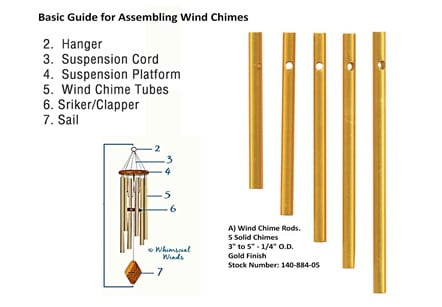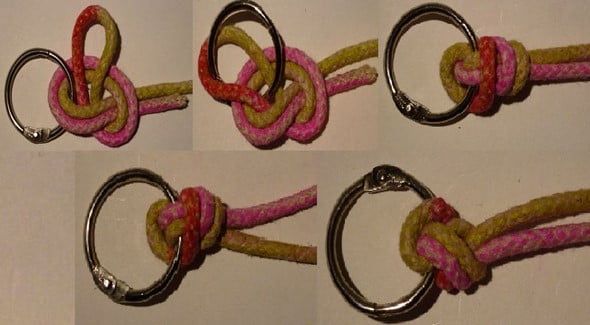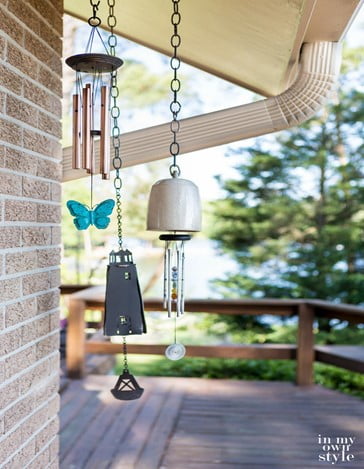We all love the gentle and soothing sound of wind chimes, especially in the morning when you are chilling on the patio chair or sitting near the window in your room with a cup of coffee to kickstart your day. This can only happen if your wind chime is in perfect condition and the strings are intact.
You might want to look at your wind chime and make sure the delicate tone continues to fall on your ears. There can be several reasons for the failure of your wind chimes; we have talked about it later.
Also, if your wind chime stops producing the sweet sound, it is better to know how you can restore it and rest it appropriately. This article talks about simple and clear steps on restringing wind chimes.
Why Should You Restring Old Wind Chimes?
For reasons like extreme winds, cold temperature freezing the strings, tangling of strings that becomes impossible to untangle, and as the time passes by, the string usually wears down, to hear the harmonious sound once again you should consider restringing wind chimes.
Restringing Them Will:
- Make it stronger to withstand extreme temperatures.
- Prevent string breakage.
- Will save you some bills, as there will not be necessary to get a new wind chime.
- Improves durability and renews the wind chime sound.
How to Restring Wind Chimes in Simple Steps
Select The String
Wind chimes come with strings that are made up of cotton or yarn usually, and they wear out quickly. They are light in weight and do not require much strength. So, if you are planning to restring them, then look out for strings that can be durable; for example, using polyester fabric, nylon cord, and even fishing line can be ideal. They are flexible, can easily resist strong winds & temperature changes, and will last forever.
Get Rid of Old Strings
Now that you have selected your thread, get rid of the old thread by slowly pulling it out, cut any knots with scissors for quick work. Replacing the whole string is preferable, as it will give great strength to your wind chime.
On the other hand, if you change just a portion of the string, then the wind chime may cause you some trouble, or the old string will wear out before the new one, thus requiring one more replacement.
Sort Out the Chime Parts

After taking out the old string, you should organize the chimes’ part, as they are not attached to anything but are held together using strings. Wind chimes have a plate or ring-like thing on the top and a ball beneath it surrounded by other parts. You should flatten all parts on the surface in their order, and it will be helpful when restraining the chimes together with the use of a new string.
Using New String
If you follow the last step carefully, it is great because the task gets easier when everything is neatly arranged. Here you will require a needle, and it is time to bring every part together using a thread that will be hooked to the needle.
Wind chimes parts have a small in them for you to pass the needle and thread. Manage the thread length as you go through every part, making sure the result looks very symmetric and stable. Lastly, cut the string using scissors.
Restring
Before stringing anything else, your focus should first be on stringing the top or bottom part. Cut 2-3 lines of thread or as per the holes on the top of your wind chimes; along with these, you will have to pass every other part through the holes. Once you are done with that, see to it that it is still symmetrical and balanced, and adjust if required.
Knit-Knit-Knit

Now, it is time to knit up everything you have been stringing. Knotting up the strings for securing your wind chime is easy, but considering the tiny strings may cause a little bit of trouble. You should choose the knot of your liking that can provide the needed strength.
You can go for Palomar knot, Solomon knot, and such others for the wind chimes. Do you not know how to tie such types of knots? The Internet is always there for your assistance.
Tighten & Soundcheck.
After tying the required knots, you should once more look at the balance of the chime and see if it is symmetrical or not. After ensuring position, tighten the knots and hold the chime by the top to determine if it has turned out perfect or not.
For a little testing, bring the chime closer to the fan and observe if it is producing the melodious sound or there is some sort of incompleteness. If the sound is not good, you might want to loosen the parts and reorganize them.
Hang It

You are almost restoring your wind chimes; the last thing to do is hang them at the desired place. We recommend hanging them on the beams either in the room or living area. Hanging them on the patio is a great idea; if you cannot find a beam there, attaching a hook to the ceiling and hanging it there can do the job! It is time to enjoy the sweet sound of your restored wind chimes daily.








Comments